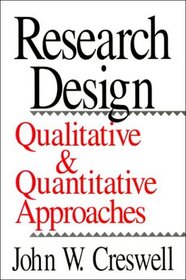Search -
Research Design: Qualitative and Quantitative Approaches
Research Design Qualitative and Quantitative Approaches
Author:
"For those whose livelihood is based on the ability to design, conduct, and report marketing research in an accurate, concise, and clear way, John W. Creswell's book, Research Design, provides guidance in dealing with some of the more difficult decisions that must be made along the way. Additionally, for marketing professors who teach others how... more »
Author:
"For those whose livelihood is based on the ability to design, conduct, and report marketing research in an accurate, concise, and clear way, John W. Creswell's book, Research Design, provides guidance in dealing with some of the more difficult decisions that must be made along the way. Additionally, for marketing professors who teach others how... more »
ISBN-13: 9780803952553
ISBN-10: 0803952554
Publication Date: 4/19/1994
Pages: 248
Rating: 2
ISBN-10: 0803952554
Publication Date: 4/19/1994
Pages: 248
Rating: 2
4.8 stars, based on 2 ratings
Publisher: SAGE Publications
Book Type: Paperback
Other Versions: Hardcover
Reviews: Amazon | Write a Review
Book Type: Paperback
Other Versions: Hardcover
Reviews: Amazon | Write a Review
Genres:
- Reference >> Education >> Research
- Nonfiction >> Social Sciences >> Research
- Nonfiction >> Social Sciences >> Statistics





